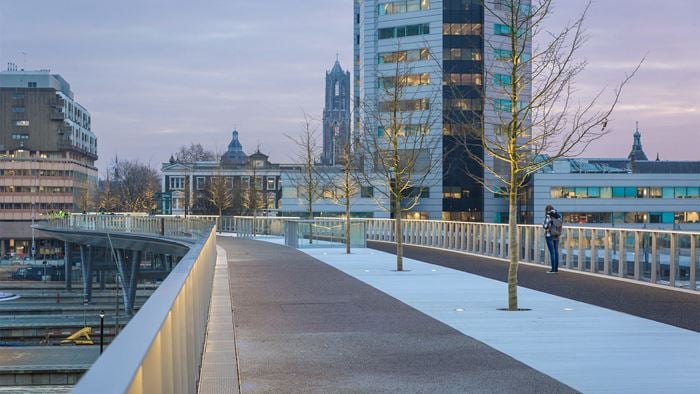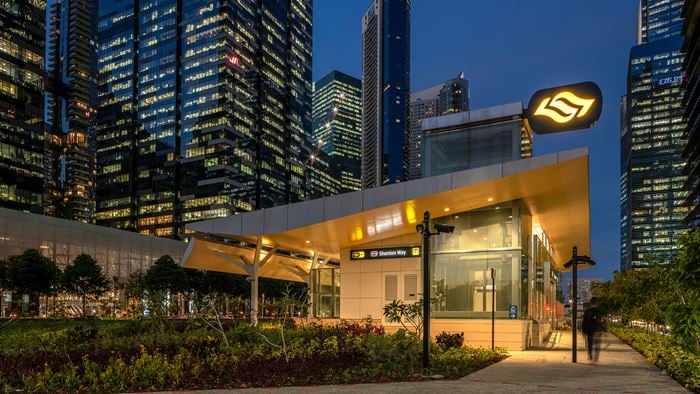Hearing impairment, or the full or partial loss of ability to hear and distinguish sounds, currently affects one in six Australians. As our population ages it is expected that by 2050 one in four people will experience hearing impairment – reducing their ability to engage with family, friends and colleagues, to enjoy leisure activities or even hear important announcements.
With hearing central to our experience of the world around us, our independence and our safety, it will become increasingly important for transport hubs, shopping centres, workplaces and education, sports, and arts and culture facilities to implement systems and technologies that improve the intelligibility of sound for all users, or they will risk losing the opportunity to effectively communicate with up to a quarter of their audience.
While it is a requirement for public buildings to install hearing augmentation systems for compliance with the Building Code of Australia, the user-outcomes of these systems are often overlooked in the design phase.
Some organisations are now improving inclusivity as part of their organisational commitments and are focussing on user experience and hearing as a service to tenants, patrons, residents or visitors within buildings and public spaces.
To improve people’s experience of hearing augmentation services, we need initial input from the hearing-impaired community and advocacy agencies to understand the user journey.
This process will overcome some of the barriers to using hearing augmentation systems and enable the design of more inclusive environments by:
-
Overcoming stigma
One in five people2 who have a hearing impairment and would benefit by using hearing aids, do not use them, because they are reluctant to be seen as having a disability. Similarly, people are reluctant to use special, sometimes clunky, large and obvious devices to interface with a hearing augmentation system. -
Improving awareness of services
It is not always obvious that a hearing augmentation system exists in a venue due to minimal signage, low number of access points, or poorly communicated instructions. People with a need for hearing support can be unaware that systems are available. -
Improving user experience
Accessing hearing augmentation systems is often a challenging and convoluted experience. Each building or public space will have systems installed to match the size and purpose of the space. For the user this can cause discomfort in certain situations – if there’s no clear instruction or signage on which system is available, if having to wear a clunky receiver pack, or if having interference or noise spill from adjacent hearing loops or simply being unable to access the hearing loop output.

Audio-frequency Induction Loops (AFILs), Infrared, Wi-Fi and Bluetooth technologies each have their pros and cons
And to further confound the issue, it's also quite common for a single venue to run multiple modalities of hearing augmentation depending on elements such as room size and furnishings. The selection of the technology at the design stage is driven primarily by the needs and constraints of the building itself, rather than considering the end-user’s experience.
AFILs is the oldest and is commonly found in airports, performing arts centres and train platforms – and uses a wire loop that encircles the space. The system requires no day to day servicing by the venue.
For a user, however, AFILs has some shortcomings; a person must own a personal hearing aid with an induction loop receiver, called a ‘T-switch’. The system is prone to interference by other devices and noise spill from other adjacent loops, affecting intelligibility. It does not account for advancements in Bluetooth hearing aid technology and cannot interface directly with a cochlear implant.
Infrared systems cover a much smaller area and are commonly used in educational or conference facilities with multiple small venues. The venue must issue a person with a receiver pack that can be used in conjunction with a headphone or connected to a personal induction loop, which then connects to a hearing aid via the T-Switch. These receivers must be maintained by the venue and require the end-user to collect and return the receiver.
While Infrared negates the need for a personal hearing aid, a person must be aware the service is available, locate the collection area and feel comfortable with wearing this pack – usually worn on a lanyard or neck strap.
Wi-Fi and Bluetooth technologies may go some way in addressing negative user experiences with other systems. It is too early to fully understand how effective these alternatives will be.
Despite the many considerations at play, collaborating with and learning from the hearing-impaired community is key to improving hearing augmentation services. By engaging designers and potential end-users early in the design of a facility when decisions on technologies are being made, or when reviewing existing systems, we can get more from hearing augmentation infrastructure.
Alongside advocacy groups, designers, architects, developers and facility managers also have a role to play in improving the awareness around availability and experience of these systems, be it through signage, websites, apps or even promotion, to ensure a larger demographic can access and enjoy the experiences and activities on offer.
1 ‘Listen Hear! The economic impact and cost of hearing loss in Australia', Access Economics, Australia, February 2006
2 Listen, Hear! Understanding hearing loss 2015
 ;
;






